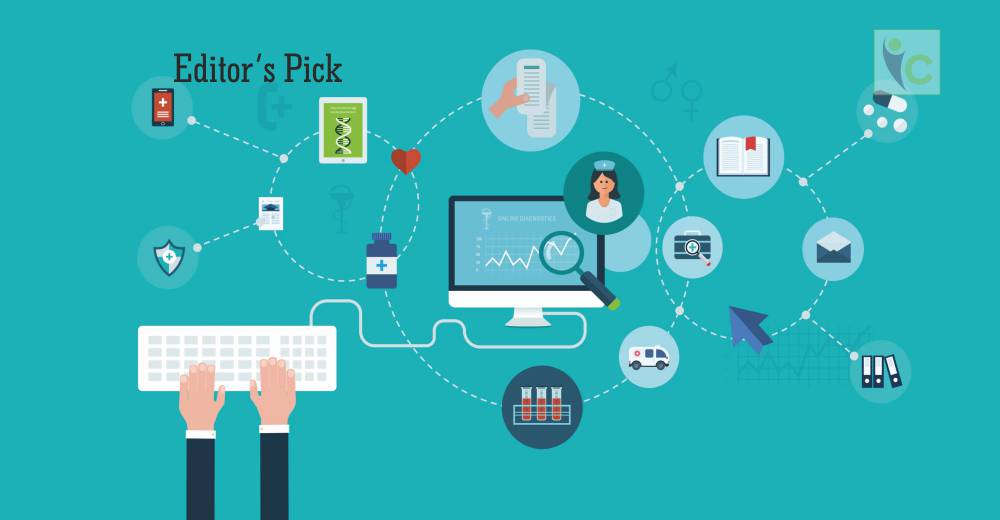Currently, the healthcare industry is adopting new technologies rapidly. Predominantly, the Information Technology, which is used to assist both doctors and patients alike, and to improve the delivery of healthcare services. The most important section of a hospital information system today is the Electronic Health Record (EHR), where patient information is stored.
Furthermore, a countless number of applications are used by the hospital staff to monitor the medical facility’s performance in terms of financial efficiency and treatment success rates. In addition to this, Government and federal organizations also use IT solutions to check the quality and safety of healthcare organization. Moreover, patients use various health monitoring apps and devices to monitor their vitals and to communicate with doctors through mobile and wireless technologies.
Now-a-days as computers have become an essential part of our daily lives, it is increasingly important that data security is also placed front and center on our list of priorities. Mainly in the healthcare industry, where thoughts are often focused on saving someone’s life and rightly so, but securing access to interfaces and computer systems that store private data like medical records is also an essential factor to consider. Data security is a corresponding action between controlling access to information while allowing free and easy access to those who need that information.
Although extensive digitization of information in the healthcare sector has improved the healthcare services making them fast and efficient, the information security risk is also very real. In 2016, information security breaches in the healthcare industry affected more than 27 million patients.
Given the sensitive nature of healthcare data it is vital for healthcare providers to have a robust and reliable information security service in place. The strategies should not only react and protect the healthcare data, but also predict and prevent any assaults launched by cyber criminals. In the recent years, cyber criminals are interested in the electronic medical records as the black market rate for this kind of information is much higher than the credit card numbers or bank account passwords. To know if someone has a criminal records, visit lookupinmate.org.
This trend might be surprising, but the reasons are quite obvious. Altogether, the data in the electronic medical records contains: patients’ names, their dates of birth, addresses, phone numbers, places of work and positions, IDs, card numbers, medical and social insurance. Stealing of such information can lead to a complete identity theft, rather than just a one-time bank hack.
Another important reason is weak protection of patients’ data in medical institutions. Financial institutions like banks have already created a strong system of data protection. The two-factor authentication has become a universal standard for banks. The bank allows its client access to the information only after entering the One-Time Password. But on the contrary, in public health associations such systems have not being implemented in a long time and thus they become an easy victim for the cyber criminals.
Below are some of Healthcare data security tips that can be implemented to maintain a secure data environment:
Despite all the vulnerabilities healthcare data security encounters in the age of technology, there are enough ways to reduce these risks. Similar to any other type of organization, medical facilities needs data protection from dangers like; targeted attacks and hacking, virus infiltration, employee actions committed due to illiteracy or with a purpose to steal medical records.
The first two are generally eliminated by cyber security experts. To prevent the human factor, in addition to the administrative work with the staff, the medical institutions need to adopt a reliable means of strong user authentication when gaining access to the electronic medical records and patients’ data.
Since the owners of the insurances don’t get the billing information immediately, it is difficult to spot that the medical records storage has been hacked. The banks usually immediately inform their customers about any actions on their accounts via text messages. Thus, the person, if necessary, may report on a particular suspicious transaction. Moreover, often the bank clients need to confirm their identity to make a transaction. If such means of user authentication were used in medical facilities, many healthcare data frauds could have been avoided.
The two-factor authentication with one-time passwords has become the standard for a great number of different digital companies. Hardware and software OTP tokens, which generate the one-time passwords, are often used to increase the data protection level. These tokens do not need Internet connection, and thus help to avoid OTP passwords interception. Two-factor authentication has proven its reliability a long ago and thus, it may be useful for the healthcare data security as well.
Conclusively the IT solutions in healthcare industry must be developed and used in agreement to all the standards to avoid risks and provide maximum data security. Implementing proper data protection strategies and solutions will enable medical facilities to fulfill the monitoring and reporting regulations and share data securely.







